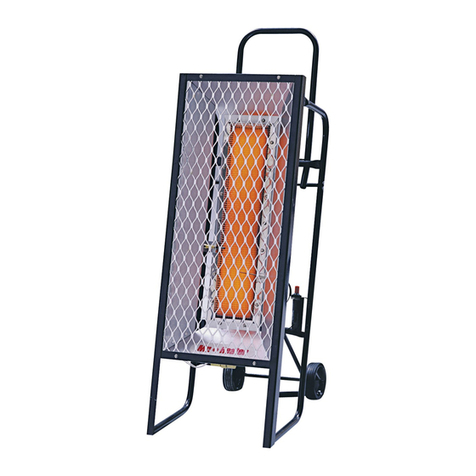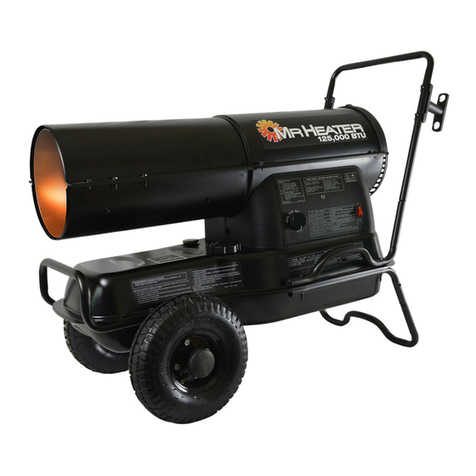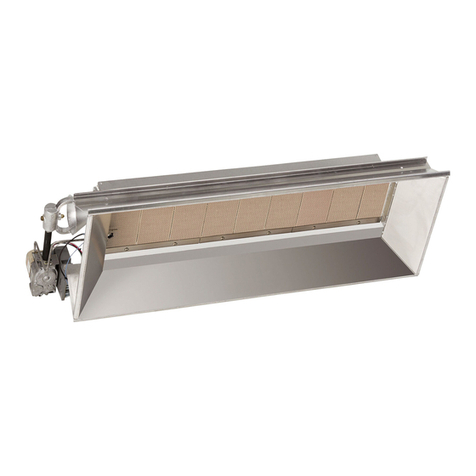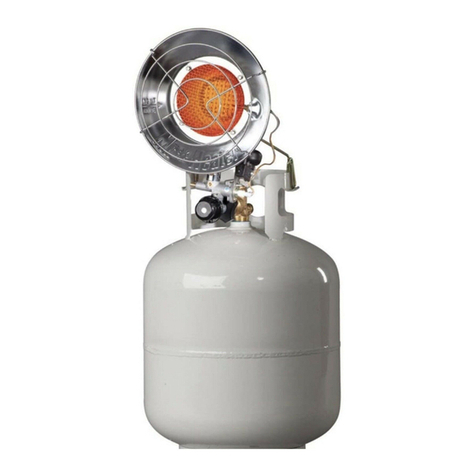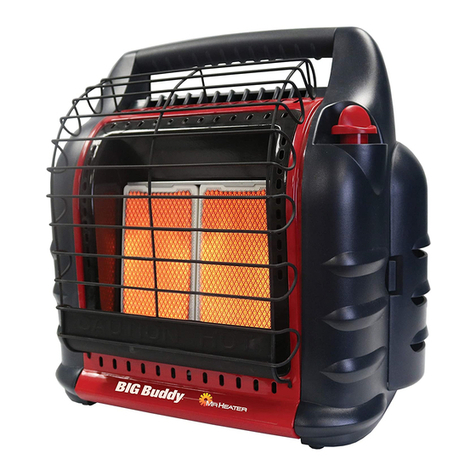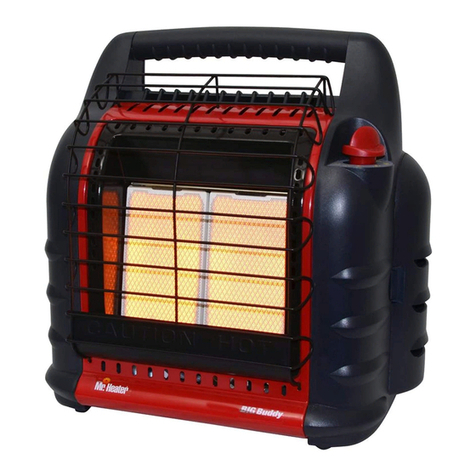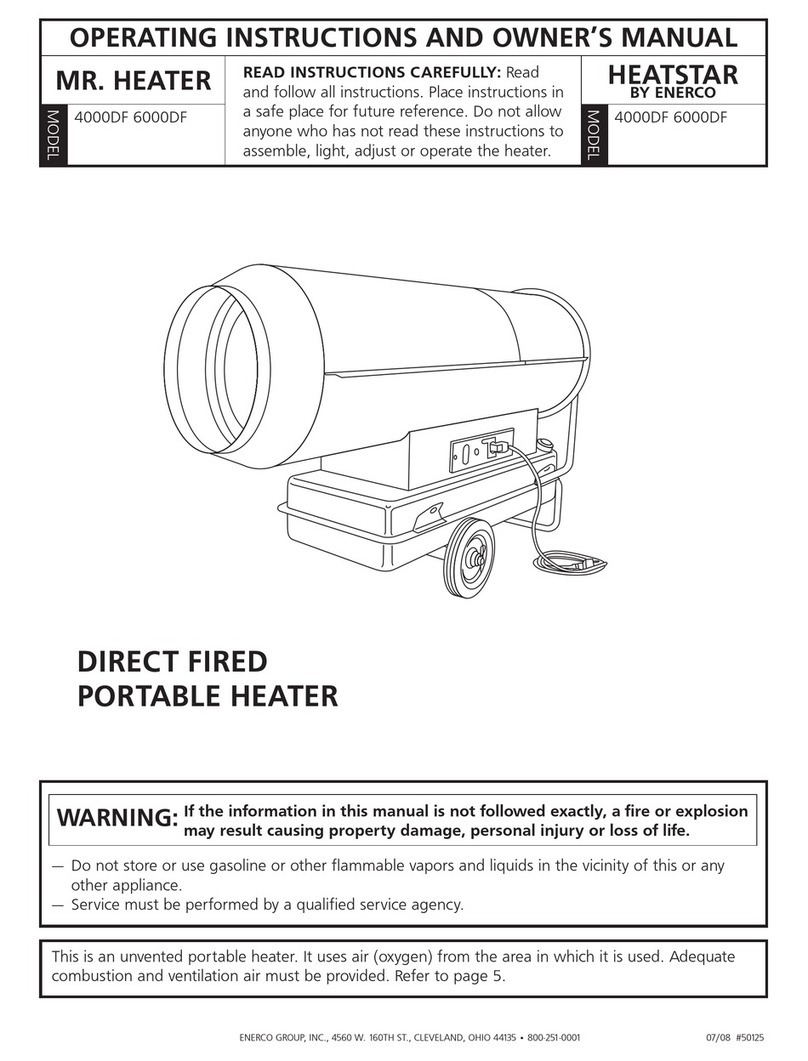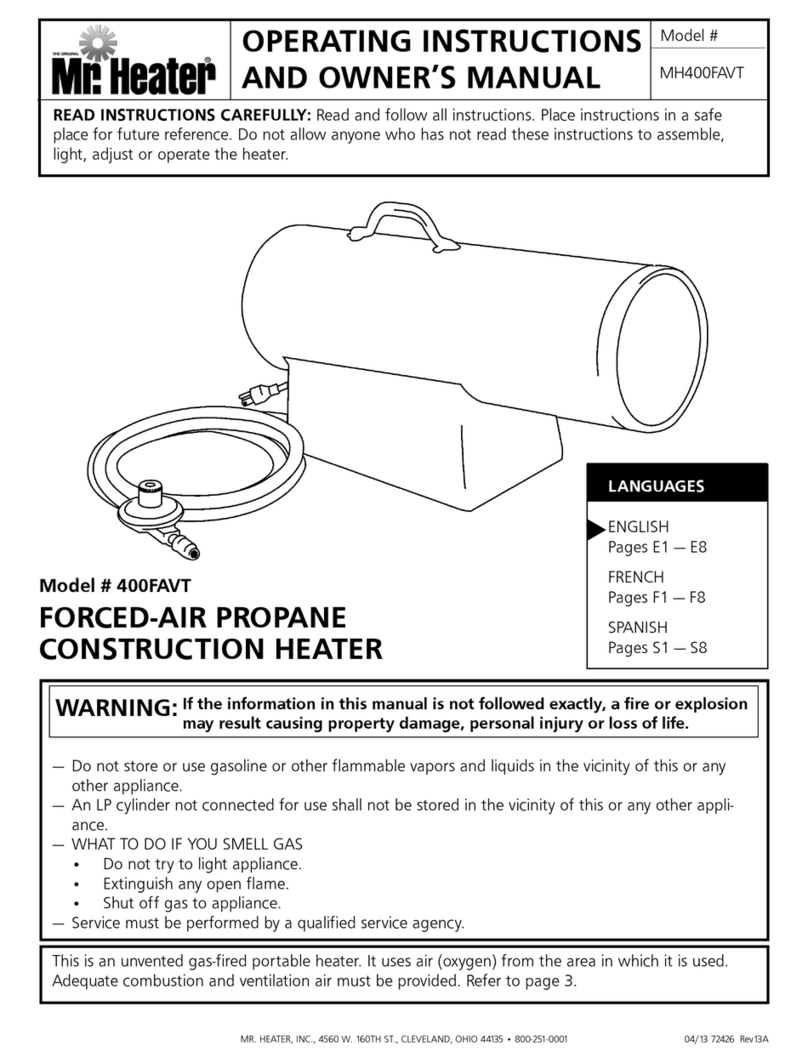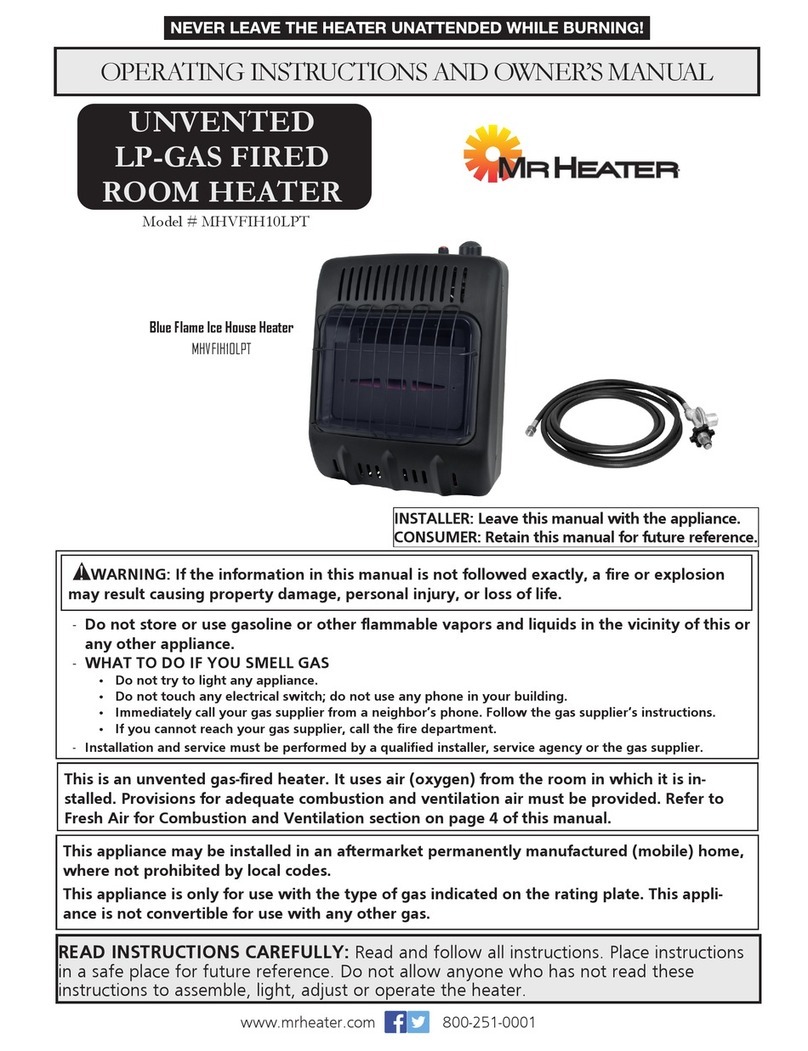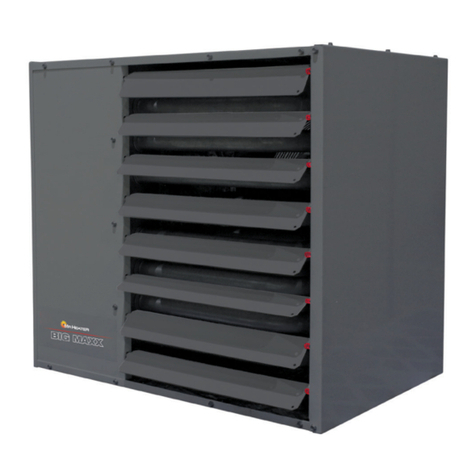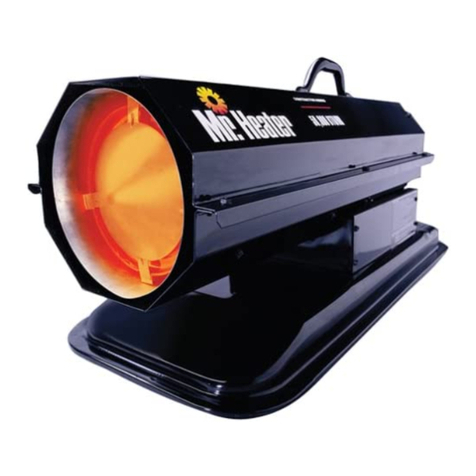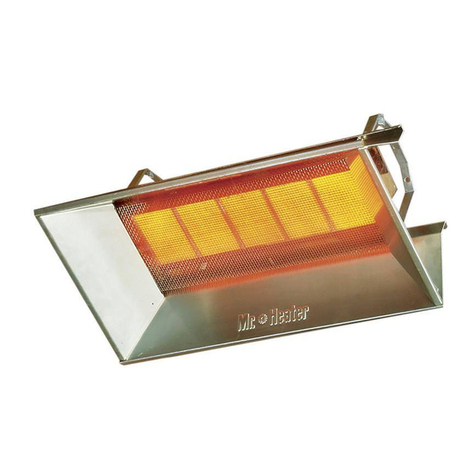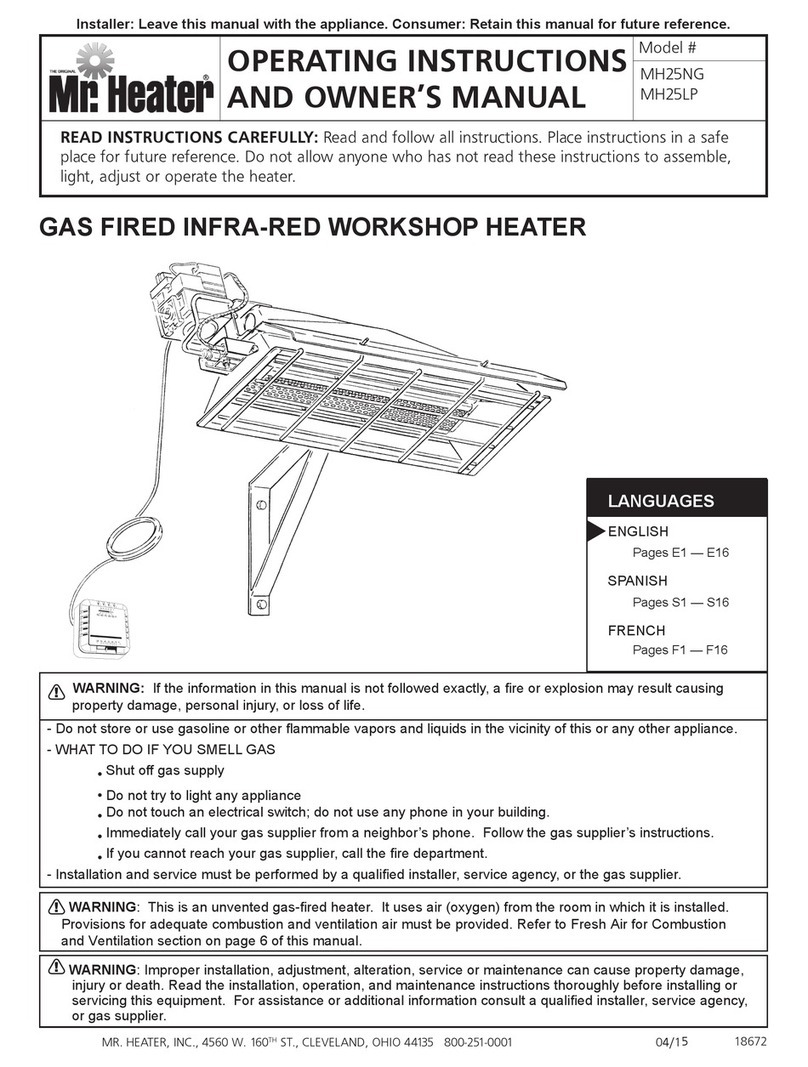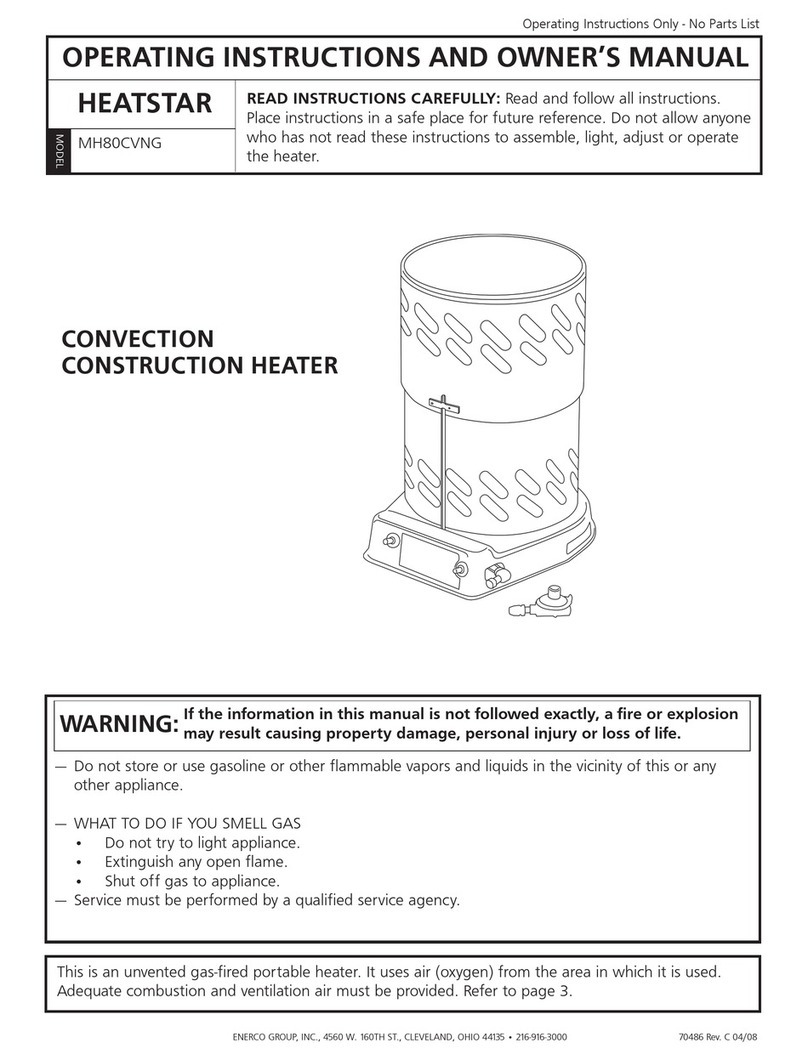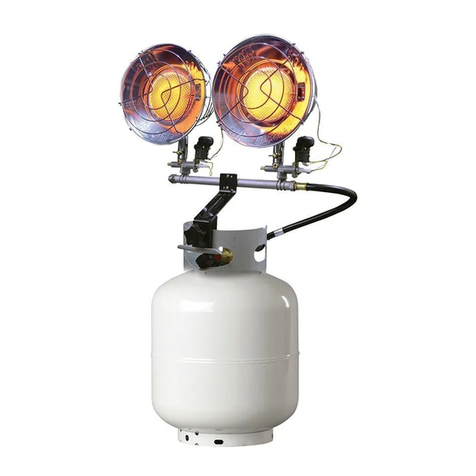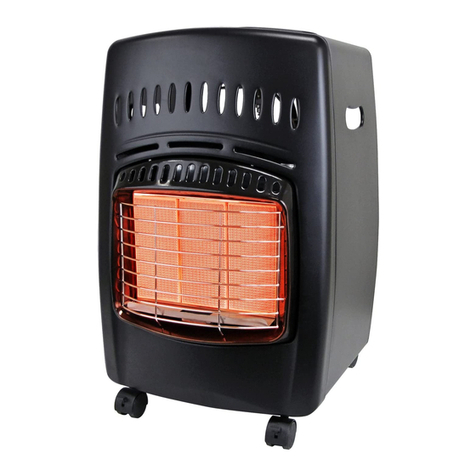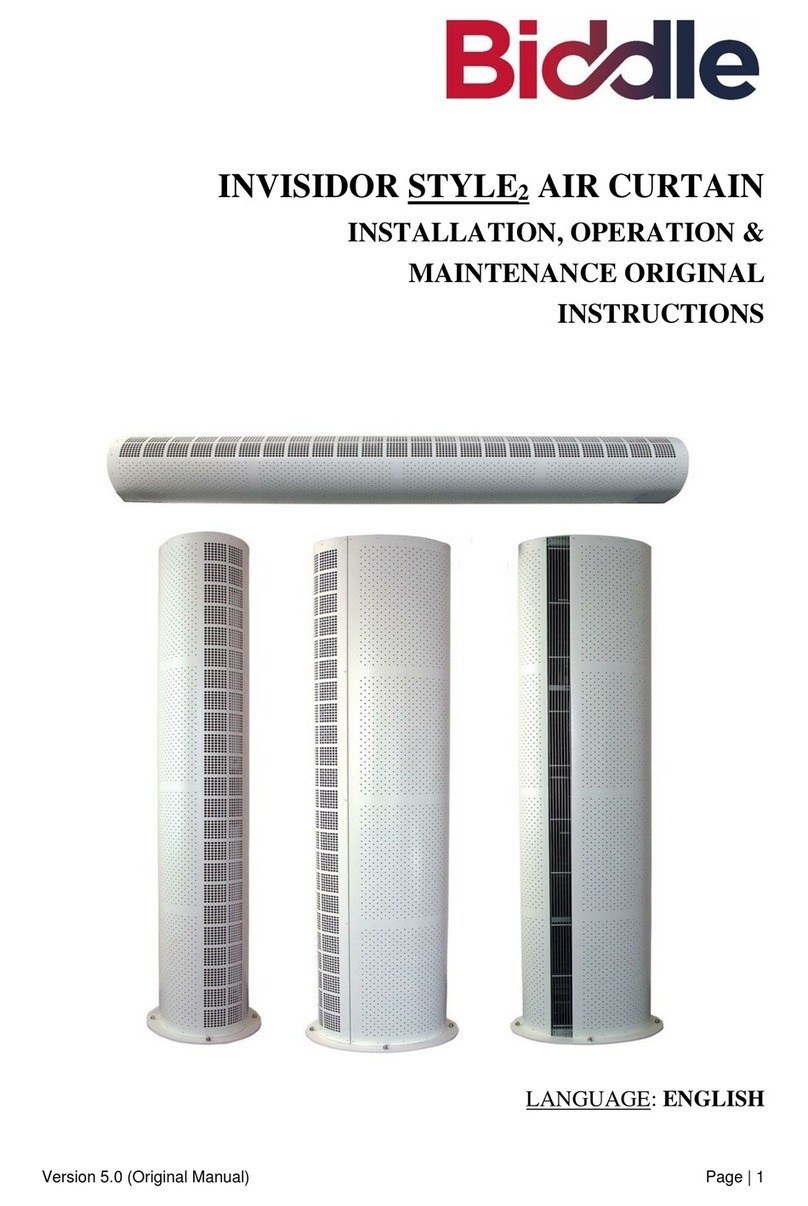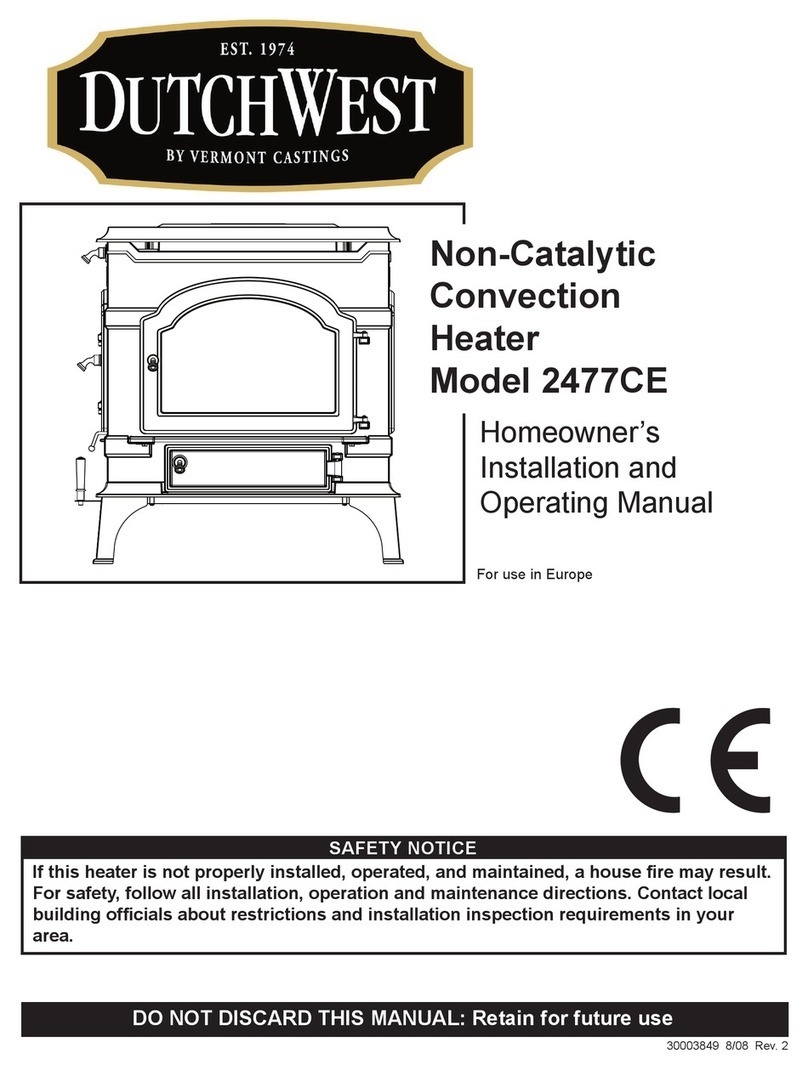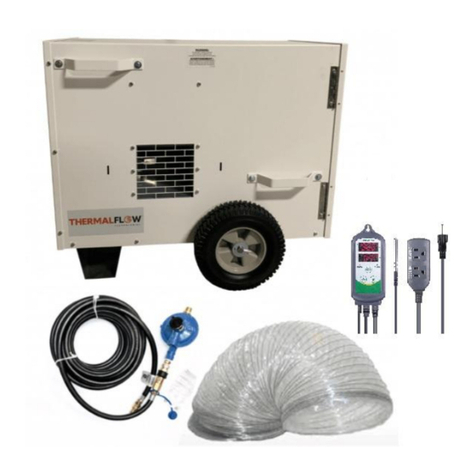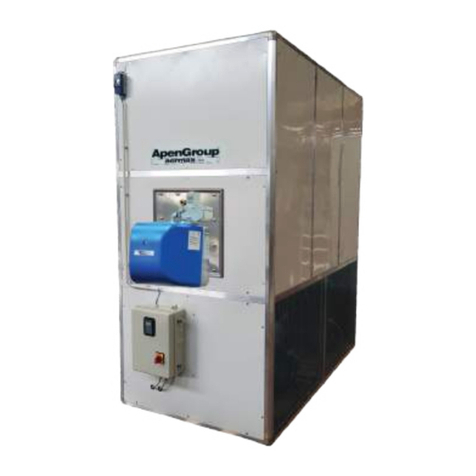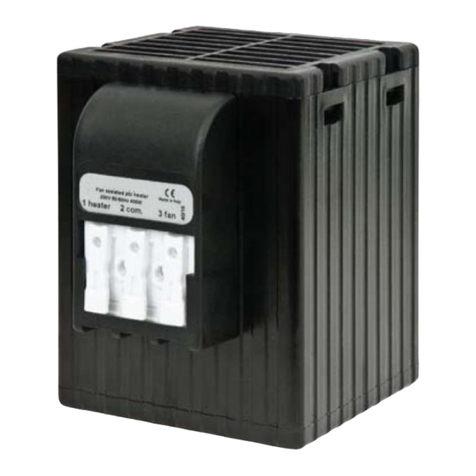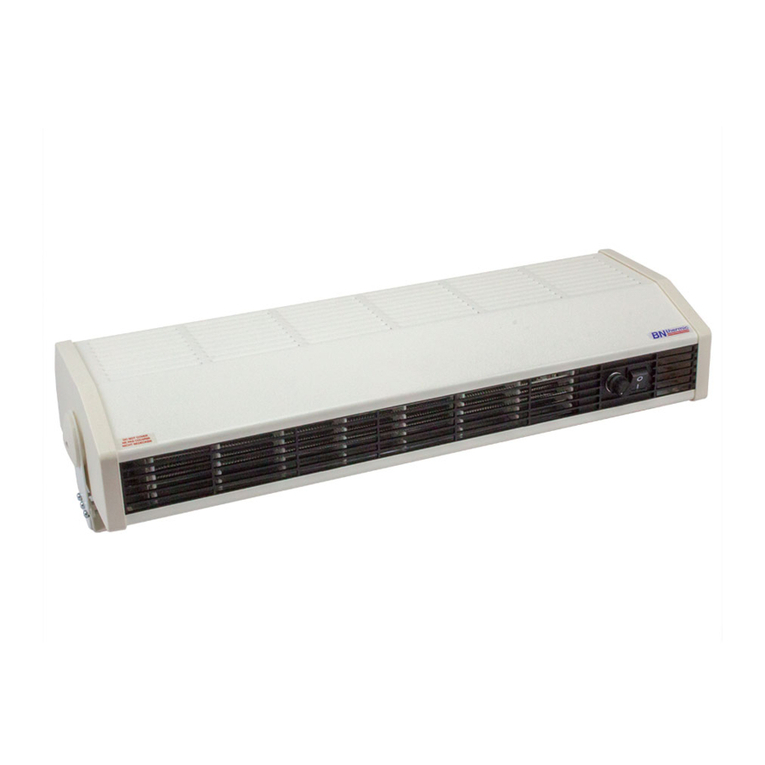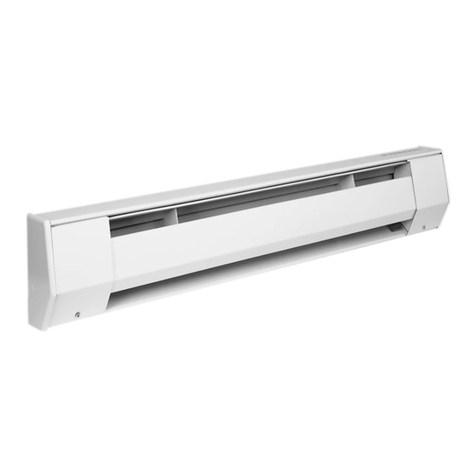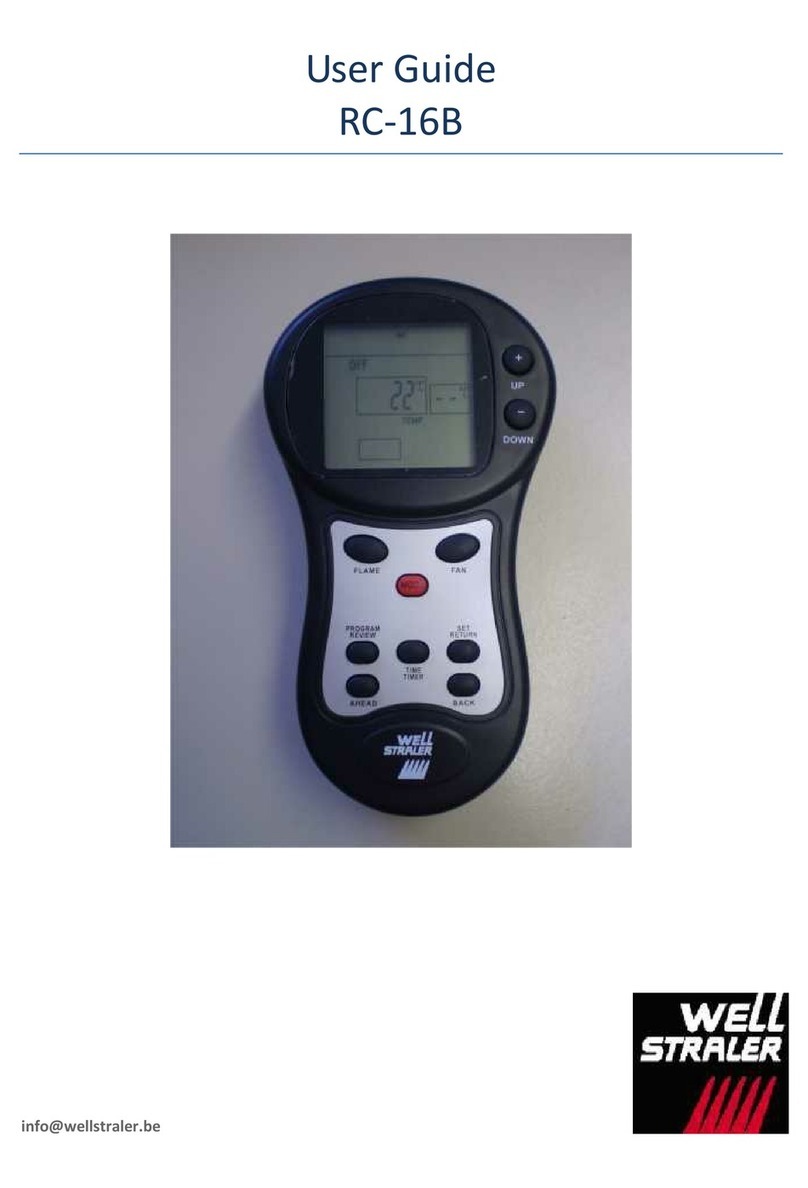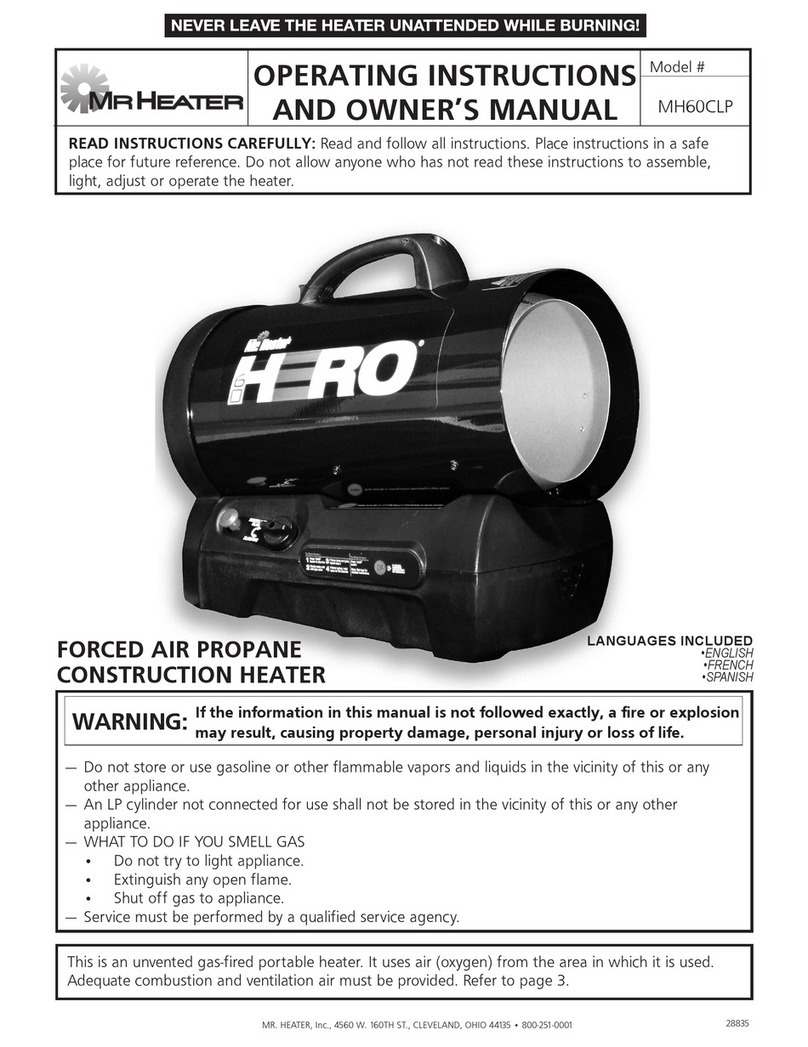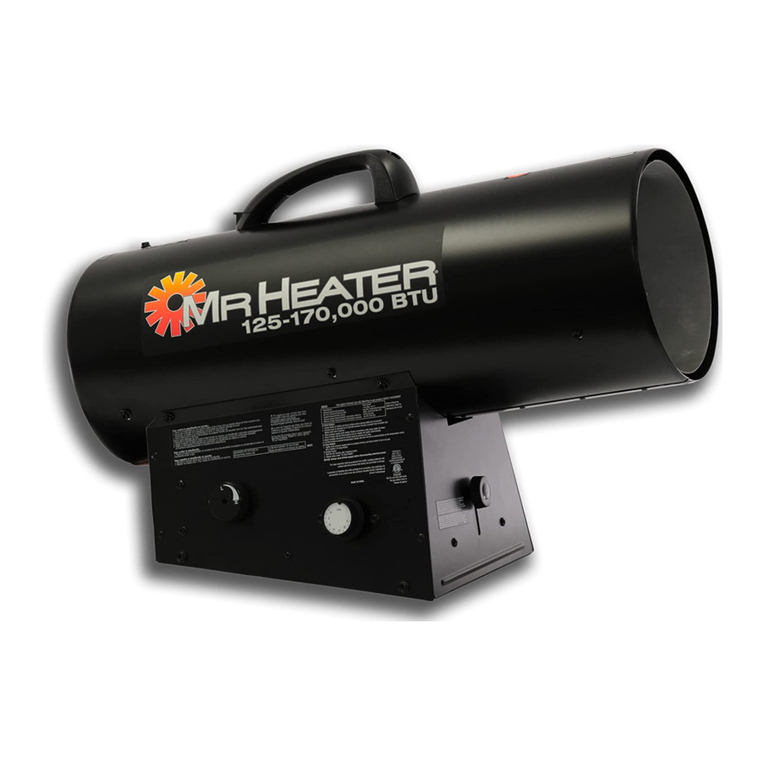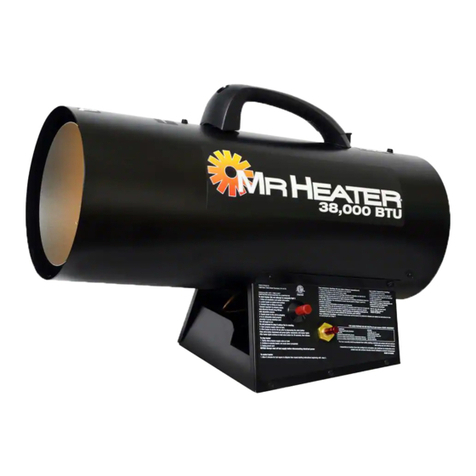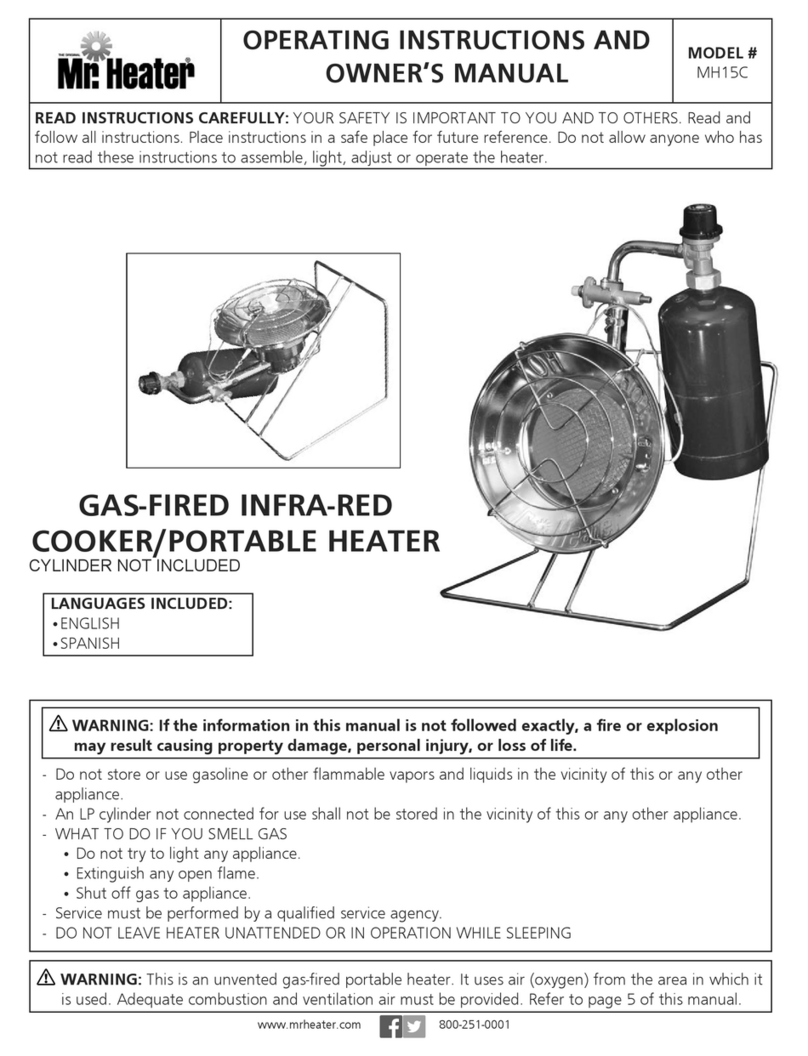
OPERATING PRECAUTIONS
Thisisapropane,direct-fired,forcedairheater.It'sintended
useisprimarilytemporaryheatingofbuildingsunder
construction,alterationorrepair.
Propaneisheavierthanair.Ifpropaneleaksfroma
connectionor fitting,itsinkstothefloor,collecting there
withthesurroundingair,formingapotentiallyexplosive
mixture.Obviously,propaneleaksshouldbeavoided,soset
upthepropanesupplywithutmostcare.Readenclosed
OdorFadeandPropaneSheetforadditionalinformation
aboutdetectingpropaneleaks.Leakchecknewconnections
orreconnectionswithasoapandwatersolutionandfollow
allconnectioninstructionsherein.Also,askyourpropane
dealerforadviceonthepropaneapplicationandsupply
installationandaskhimtocheckitifthereareanyquestions.
Thisheaterwasdesignedandcertifiedforuseasa
constructionheaterinaccordancewithANSIStandard
Z83.7/CGA2.14-2000.Checkwithyourlocalfiresafety
authorityifyouhaveanyquestionsaboutyourapplications.
Otherstandardsgoverntheuseoffuelgasesandheat
producingproductsinspecificapplications.Yourlocal
authoritycanadviseyouaboutthese.
Direct-Firedmeansthatallofthecombustionproductsenter
theheatedspace.Eventhoughthisheateroperatesvery
closeto100percentcombustionefficiency,itstillproduces
smallamountsofcarbonmonoxide.Carbonmonoxide(called
CO)istoxic.Wecantoleratesmallamountsbutnotalot.CO
canbuildupinaheatedspaceandfailuretoprovide
adequateventilationcouldresultindeath.
Thesymptomsofinadequateventilationare:
•headache
•dizziness
•burningeyesandnose
•nausea
• dry mouth or sore throat
So,besuretofollowadviceaboutventilationinthese
operatinginstructions.
ForcedAirmeansthatablowerorfanpushestheair
throughtheheater.Propercombustiondependsuponthis
airflow;therefore,theheatermustnotberevised,modified
oroperatedwithpartsremovedormissing.Likewise,safety
systemsmustnotbecircumventedormodifiedinorderto
operatetheheater.
Whentheheateristo beoperated inthe presenceof
otherpeopletheuserisresponsibleforproperly
acquaintingthosepresentwiththesafetyprecautions
andinstructions,andofthehazardsinvolved.
SAFETY PRECAUTIONS
1. Check the heater thoroughly for damage. DO NOT
operate a damaged heater.
2. DO NOT modify the heater or operate a heater which
has been modified from its original condition.
3. Use only propane gas.
4. Use only VAPOR WITHDRAWAL propane supply. If there
is any question about vapor withdrawal, ask your
propane dealer.
5. Mount the propane cylinders vertically (shutoff valve up).
Secure them from falling or being knocked over and
protect them from damage.
6. Locate propane containers at least (USA) 7 ft. (2.13m),
(Canada) 10 ft. (3m) from the heater and do not direct
exhaust toward containers.
7. IMPORTANT Use only the hose and regulator assembly
provided with the heater. Match the color stripe on the
hangtag attached to the hose assembly with the color
on the label located near the propane inlet fitting on the
heater. Inspect hose assembly before each use of the
heater. If there is excessive abrasion or wear, or hose is
cut, replace with hose assembly listed on parts list
before using heater.
8. For indoor use only. Area must be well ventilated. Figure
1. (also see "Operating Precautions").
9. If at any time gas odor is detected, IMMEDIATELY
DISCONTINUE operation until the source of gas has
been located and corrected. Read enclosed Odor fade
and Propane Sheet for additional information about
detecting propane leaks.
10. Install the heater such that it is not directly exposed to
water spray, rain and/or dripping water.
11. Maintain minimum clearance from normal combustible
material (like paper). Figure 2.
12. Due to the high surface and exhaust temperatures,
adults and children must observe clearances to avoid
burns or clothing ignition.
13. Operate only on a stable, level surface.
14. Do not use with duct work. Do not restrict inlet or exit.
15. Use only the electrical power specified. The electrical
connection and grounding must comply with National
Electrical Code - ANSI/NFPA 70 (USA) and CSA C22.1
Canadian Electrical Code, Part 1 (Canada).
16. Use only a properly grounded 3-prong receptacle or
extension cord.
17. Do not move, handle or service while hot or burning.
18. Do not adjust the heater combustion tube elevation
while heater is running or hot. Adjustments to elevation
should only be made after the heater has cooled to
touch.
19. Use only in accordance with local codes or, in the
absence of local codes, with the Standard for the
Storage and Handling of Liquefied Petroleum Gases
ANSI/NFPA 58 and CSA B149.1, Natural Gas and
Propane Installation Code.
Opening Opening
Heater nearfloor nearceiling
Forcedair(170FAVT)3ft
23 ft2
Clearance Forced Air 170FAVT
From floor ...................................................0 ft
Fromoutlet ..................................................6 ft
From sides ..................................................2 ft
From top ......................................................3 ft
Locate 10 ft. from canvas or plastic tarpaulins or similar
coverings and secure them to prevent flapping or movement
Figure1
VENTILATION:Minimumopeningsrequired
3
EnercoGroup,Inc. |Force-AirPropaneConstructionHeater OperatingInstructionsandOwner’s Manual
Figure2:MINIMUMCLEARANCE:Fromnormalcombustiblematerials
